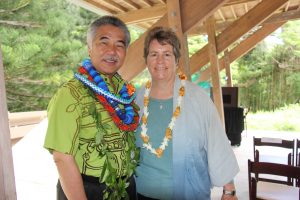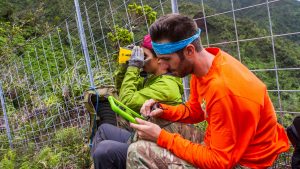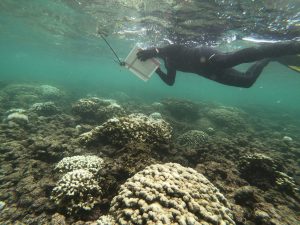DLNR: Protecting Hawai‘i, planet Earth and all of us
Posted on Apr 27, 2022 in Capitol Connection, Featured, MainEvery time you reach for a glass of water, every time you turn on the light, think what it took to make that happen. If we’ve learned anything during the pandemic, the Red Hill crisis and even the war in Ukraine, it’s how fragile life is and how easy it is to take it for granted. For nearly eight years, Governor Ige has prioritized environmental protection and a commitment to clean energy because he saw them as central to Hawai‘i’s survival. “The threats from global warming keep increasing, so we have to invest in protecting what we have,” he has said.
But talk, as the cynics say, is cheap. The difference is that the Ige administration has made good on many of the goals in the Sustainable Hawai‘i Initiative announced in 2016 at the World Conservation Congress. “Early on, that gave us a clear roadmap to focus our actions over the next few years,” said Suzanne Case, director of the state Department of Land and Natural Resources. The plan included: • Protecting 30 percent of our highest priority watersheds by 2030; • Effectively managing 30 percent of our nearshore ocean waters by 2030; • Implementing the first Hawai‘i Interagency Biosecurity Plan by 2027; • Achieving 100 percent renewable electricity by 2045; • Doubling the state’s local food production by 2020.
And why 30 percent? According to scientists, this number represents the “tipping point” or crucial marker beyond which it is tough to reverse negative effects. During Governor Ige’s two terms, the rate of watershed protection doubled with increased state funding. “We’re trying to maintain the fabric of our forests to maintain our water supply, provide a home for our native species and protect our coral reefs from erosion,” said the governor. Among other accomplishments, director Case pointed to more effective instream flow standards for at least 47 streams – a process she said had been “stuck for decades.” The goal is to protect natural, recreational and cultural resources as well as provide for agriculture, homesteading and renewable energy.
DLNR’s kuleana spans 10 divisions and 1.3 million acres of state lands, beaches and coastal waters. Director Case praises her dedicated staff who do the heavy lifting on every island. She has dealt with her own share of contentious issues — from water rights to the Thirty Meter Telescope. But despite it all, she said, “I love this job, even though it’s hard every, single day. You’re right at the ridgeline where there are people on one side or the other of an issue, and you have to figure it out. People are always mad at you because you’re not doing things their way. You’re always just trying to navigate the best course in difficult situations — just like the governor. But if you just govern by our constitution and stick with the guiding principles — the public trust — those are pretty good guideposts. Things go sideways when people try to protect some particular interest rather than the public good. If you stick with the public good and fairness, you can usually find your way.”
Why did she decide to take on the job back in 2015? “I had spent my whole career with The Nature Conservancy, but I thought this was the ultimate way to make good on my commitment to natural resources,” she said. “I lucked out working for Governor Ige because his values are in the right place. I’m very proud that, with the governor’s leadership and support, we’ve been able to make significant progress.” And how does she feel about the global environmental outlook? “I’m encouraged by the number of people in governments and communities just doing whatever they can. There’s a public sense that things need to change. The fact that Hawai‘i is a leader in actions being taken to address climate change is a good microcosm for the world. We have to do it ourselves. We can’t wait for anybody else to fix this problem. If everyone does their part, we’ll have a chance.”


